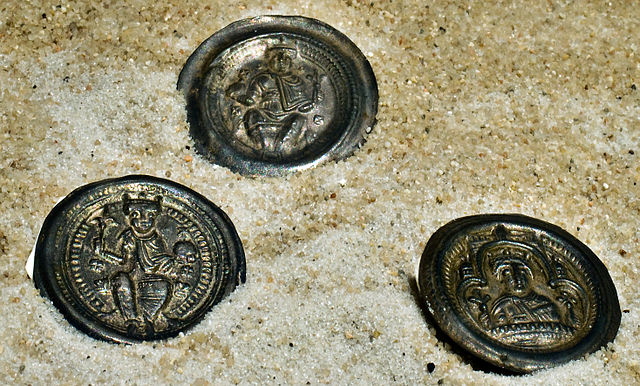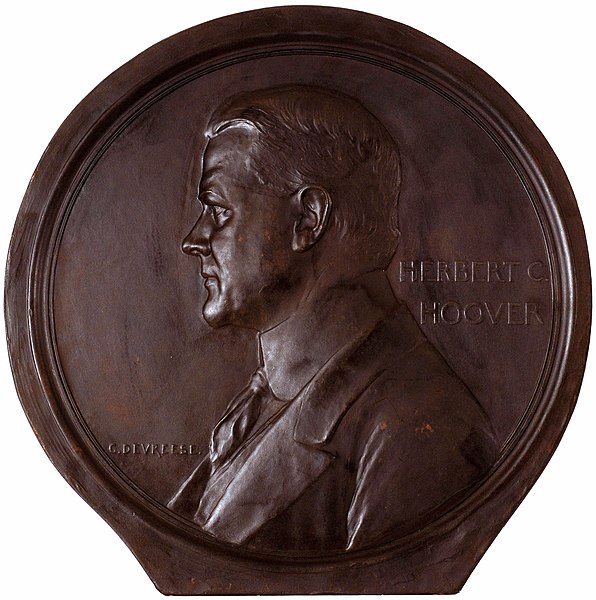A bracteate is a flat, thin, single-sided gold medal worn as jewelry that was produced in Northern Europe predominantly during the Migration Period of the Germanic Iron Age. Bracteate coins are also known from the medieval kingdoms around the Bay of Bengal, such as Harikela and Mon city-states. The term is also used for thin discs, especially in gold, to be sewn onto clothing in the ancient world, as found for example in the ancient Persian Oxus treasure, and also later silver coins produced in central Europe during the Early Middle Ages.
Bracteate DR BR42 bearing the inscription Alu and a figure on a horse
B-bracteate of the B7 or "Fürstenberg" type, found in Welschingen (IK 389), interpreted as depicting Frija-Frigg
Reverse of a Medieval European Bracteate (coin) made out of silver
Medieval silver bracteates (hollow pennies), with depictions of Frederick I, Holy Roman Emperor, 12th century, Frankfurt am Main
A medal or medallion is a small portable artistic object, a thin disc, normally of metal, carrying a design, usually on both sides. They typically have a commemorative purpose of some kind, and many are presented as awards. They may be intended to be worn, suspended from clothing or jewellery in some way, although this has not always been the case. They may be struck like a coin by dies or die-cast in a mould.
Obverse of medal distributed by Cecilia Gonzaga's family to political allies, a common practice in Renaissance Europe. Designed by Pisanello in 1448.
Reverse of the same medal, this copy with a suspension hole added later (inside a crescent moon in the design).
Medal depicting Herbert C. Hoover by Devreese Godefroi
Various prize medals with obverse designs, suspension rings and ribbons typical of medals intended to be draped over the head and hung from the neck








